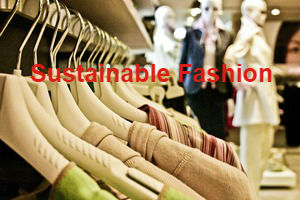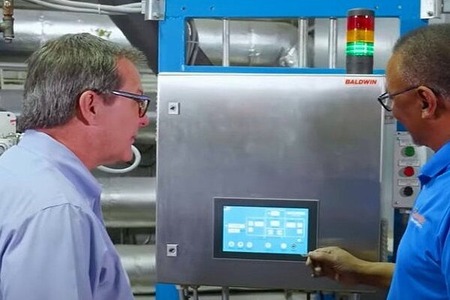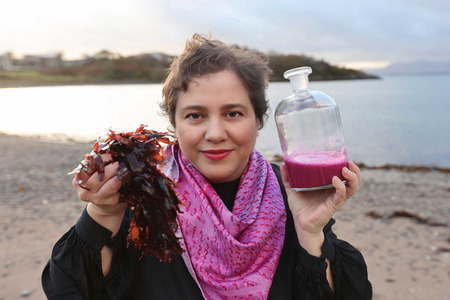
Sustainable fashion to be the future
YarnsandFibers News Bureau 2019-02-15 17:27:00 – USAWhat does the future hold? Likely more eco-friendly awareness as younger generations increase their buying power. The CGS survey showed that Gen Z ranks ethical business/manufacturing as one of the top factors that affect purchasing decisions. Sustainability is on the cusp of being recognized across the apparel market, from luxury goods to fast fashion. Paul Magel is president of the Business Applications and Technology Outsourcing division at CGS. He leads the company’s flagship BlueCherry® Enterprise Suite of solutions for the fashion, apparel and consumer lifestyle products industry. He also manages the Cloud Technology and Cybersecurity practice overseeing sales, delivery, support and development.
Brands are taking ownership, but more is needed to meet eco-friendly apparel and consumer needs. This means executing ethical business and manufacturing processes, developing a mission that consumers can align with, following global and regional labor laws and using eco-friendly materials. If brands are committed to this initiative, they will on their way to saving the planet, one shirt at a time.
In the U.S., the Sustainable Apparel Coalition has also developed the Higg Index, a standardized supply chain measurement suite of tools. Similarly, in the U.K., Fashion For Good provides companies looking to make fashion more sustainable with a boost to scale up their businesses. For companies that are unsure about where to begin with their sustainable efforts, these coalitions offer a lot of resources and community assistance.
Sustainable business practices: where to start - Organizations can take small steps to begin to incorporate more sustainable business practices at every stage of the product lifecycle. The Sustainable Apparel Coalition is just one example of how organizations are taking action to create more sustainable efforts across the supply chain. In this case, apparel, footwear and textile companies came together to develop several business practices and industry standards. A good example of sustainable products in the supply chain is A&E, manufacturer and distributor of industrial and consumer sewing thread. Its threads are manufactured with recycled drinking bottles using PFC-free processes; 48 percent of the fuel it uses to create steam in dying operations comes from renewable, carbon neutral fuel. Since 2013, the company has recycled and reused 1.5 billion liters of wastewater, which if not treated properly, would negatively impact the environment.
Technology also plays a huge role in sustainable success. A PLM solution can provide real-time visibility into the supply chain, helping manufacturers remain socially compliant while also increasing productivity and reducing cost. With the increased pressure of international labor laws and compliance, manufacturers need solutions that can give them immediate visibility into their sustainable business practices. As apparel manufacturers strive to remain competitive, integrating PLM within the larger digital transformation strategy will be a requirement for success.
And from farm to shelf, consumers can fully understand the journey of a garment with blockchain technology. With blockchain, sustainability and compliance of an item can be tracked on the raw materials and manufacturing processes. Authenticity of a garment, especially important in the fashion brands, can be proven easily; thus, rooting out counterfeit products. Making blockchain information immediately available to consumers lets the apparel or fashion brand tell the story of an item’s origins far better than a simple “Made in…†label.
Sustainable fashion: success stories - While there is still a long way to go when it comes to full consumer acceptance of apparel sustainability, several brands are making their mark. These businesses are the gold standard, and what organizations should strive for to continue the global sustainability mission.
In fact, sustainable fashion first made waves in the 1970s along with the paisley patterns decorating bell-bottoms. Two decades later, the concept of ‘conscious consumerism’ entered the scene. As Americans became more aware of low wages and poor working conditions at international factories, apparel and fashion brands realized the need to make changes if they wanted to retain their customer base.
But sustainable fashion goes far beyond ensuring fair wages abroad. Today, U.S. consumers are concerned about sustainability across all aspects of the supply chain–from the origin of the materials, to the ethical manufacturing practices, to where the final product shipped. Fashion trends may pass and fade, but sustainability continues to flourish. To retain customer loyalty, businesses must move toward sustainable business practices across the supply chain, while being transparent about the process.
Patagonia: Patagonia is one of the first businesses to come to mind when thinking about environmentalism and sustainability. Not only does the company develop recycled materials, it has made a steadfast commitment to the environment, pledging at least 1 percent of sales or 10 percent of pre-tax profits—whichever is more—to environmental groups. Recently, the CEO of Patagonia announced that the company will donate $10 million saved from taxes to environmental groups worldwide.
The North Face: The North Face is in the business of developing sustainable materials to save the environment. Most recently, the company created ThermoBall Eco, made from recycled materials. The insulation includes at least five plastic bottles that otherwise would have ended up in a landfill.
Adidas: Long before sustainability was a buzzword, Adidas was practicing what it preached. In 1998, the company developed its global contractual Workplace Standards, based on international human rights and labor rights conventions. And in 2001, Adidas published its first sustainability report, a practice many other companies are adopting today. In 2014, Adidas committed be 99 percent free of poly-and perfluorinated substances (PFCs) by 2017. And, by end of 2018 the company target of sourcing 100 percent sustainable cotton.
TOMS: Not only does TOMS Shoes create environmentally conscious products, the company’s core business model and mission is to help address and advance health, education and economic opportunity for children and their communities around the world. For every pair of shoes that TOMS sells the company donates a pair to a child in need, and has donated more than 60 million pairs of shoes to-date.
Sustainabile fashion will be the future - In many ways, brands are ahead of consumers in the sustainable movement. Levi Strauss & Co. and The World Bank Group’s International Finance Corporation recently pledged to reward garment suppliers for stronger labor, environment, health and safety performance. And, in a recent survey of 1,600 U.S. consumers, business applications company CGS found that 62 percent were influenced by pricing when purchasing apparel and footwear items. Yet, sustainability is starting to rise in consumer importance, with 68 percent of the CGS survey respondents saying that sustainability is at least “somewhat important†to them when making a purchase.
Market Intelligence
Ask for free sample Report

experience
Customer Base
dedicated team
Countries Served Worldwide









